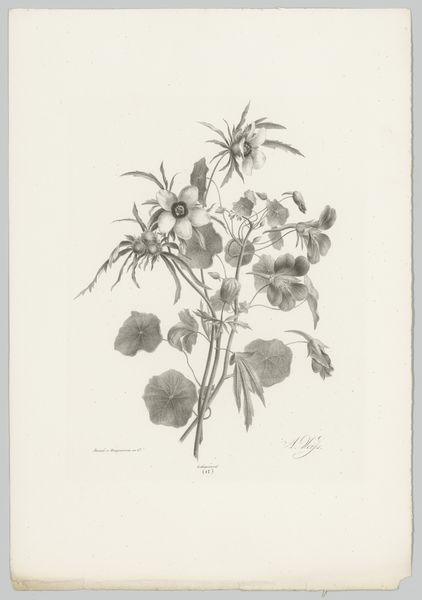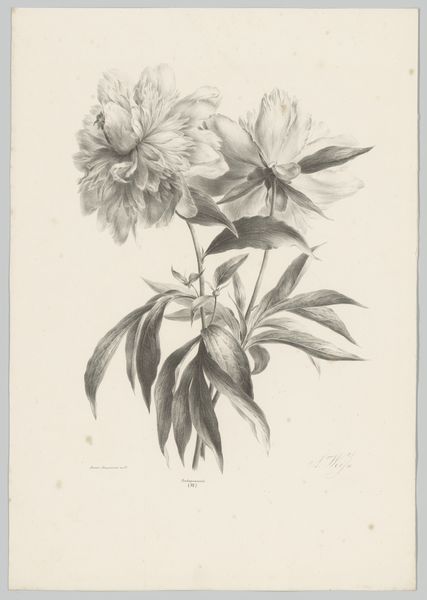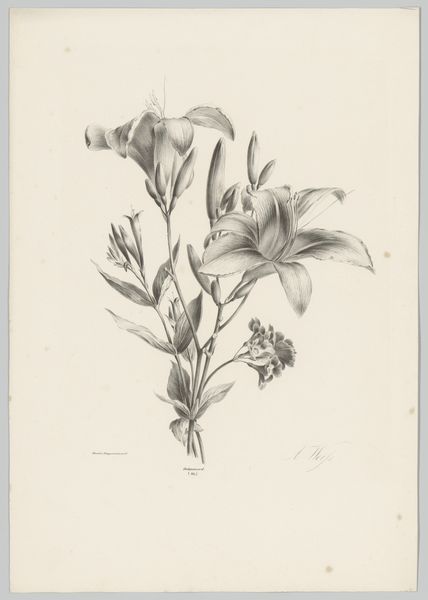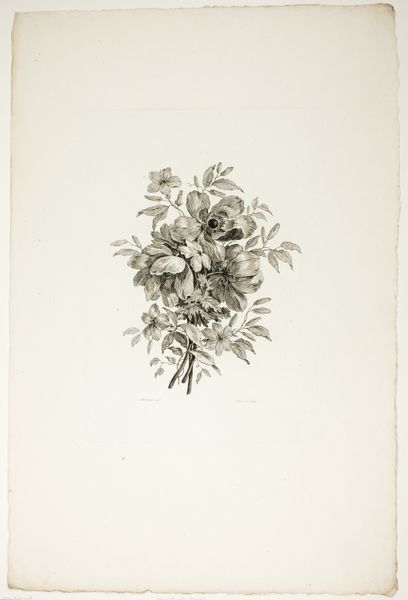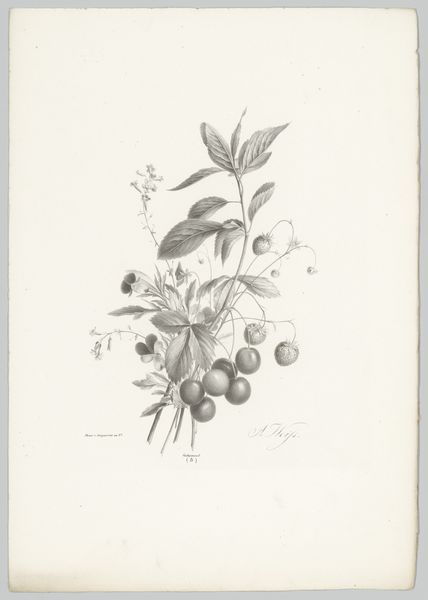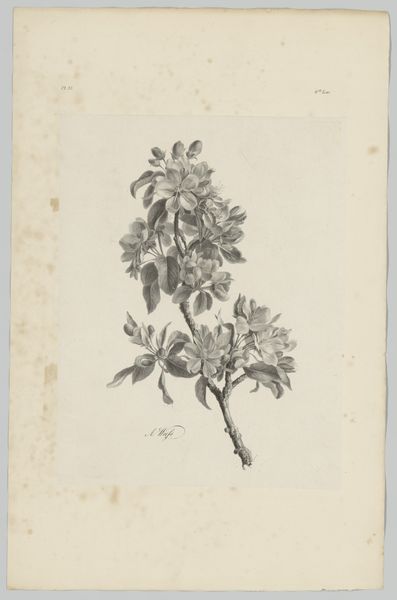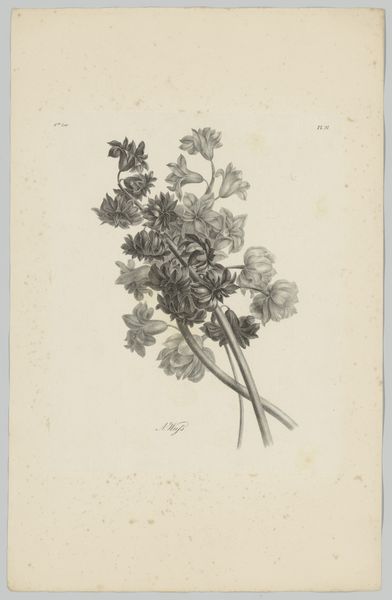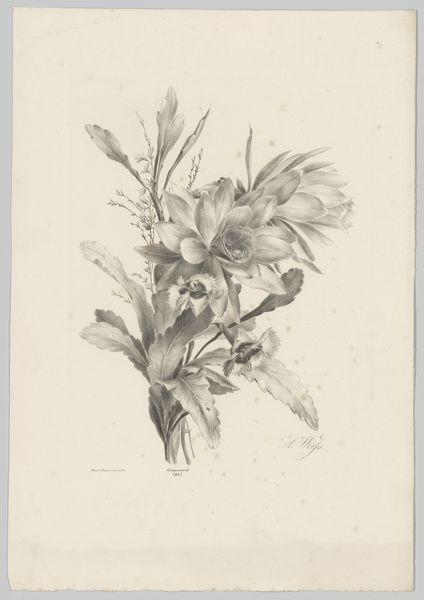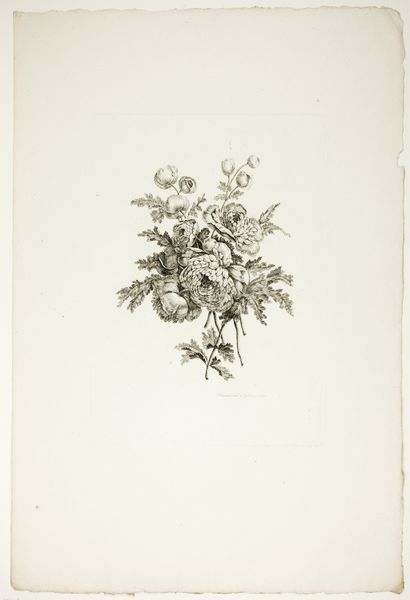
drawing, paper, pencil
#
drawing
#
paper
#
romanticism
#
pencil
#
botanical drawing
#
academic-art
#
realism
Dimensions: height 428 mm, width 296 mm
Copyright: Rijks Museum: Open Domain
Editor: Here we have “Bloemen aan tak,” or "Flowers on a Branch," a pencil drawing on paper by Anton Weiss, from 1836. I find the delicate detail quite captivating, and almost photographic. What do you make of its quiet presence? Curator: The symbolism inherent in floral depictions throughout history is vast and ever-evolving. What at first appears to be simply a botanical study reveals layers of cultural memory. Note the precise rendering, almost scientific in its accuracy; do you think that reflects the artistic inclinations of the period? Editor: Yes, it reminds me of botanical illustrations in textbooks, a commitment to realistic depictions. Curator: Consider the blossoming branch itself: a potent symbol of spring, rebirth, and fleeting beauty. The artist has captured a moment of transient perfection. Are there any aspects of this particular branch that speak to you? Perhaps the placement of the leaves or a break in the branch? Editor: The leaves seem deliberately arranged, guiding the eye, and perhaps also demonstrating the artist's skill. The single large leaf almost anchors the entire composition. Curator: The contrast between the delicate blossoms and the strength of that leaf speaks volumes. One wonders what personal meaning Weiss invested in this simple scene. How might contemporary viewers interpret this symbolism differently than audiences in 1836? Editor: That's fascinating. Today, it feels like a quiet appreciation of nature, maybe tinged with a little melancholy given its muted tones. Thank you, I learned to observe much more than what I thought it could initially convey. Curator: Indeed, art often acts as a mirror reflecting not just the world, but also our ever-evolving selves.
Comments
No comments
Be the first to comment and join the conversation on the ultimate creative platform.

